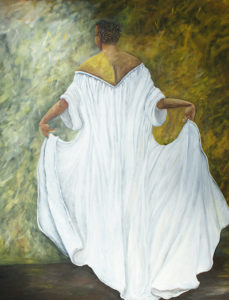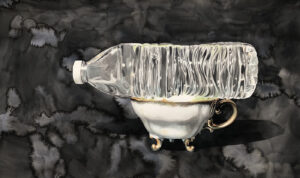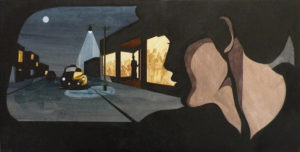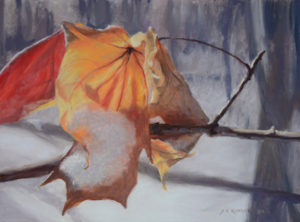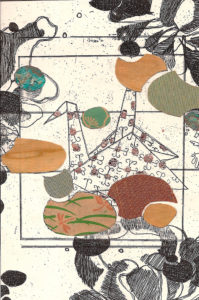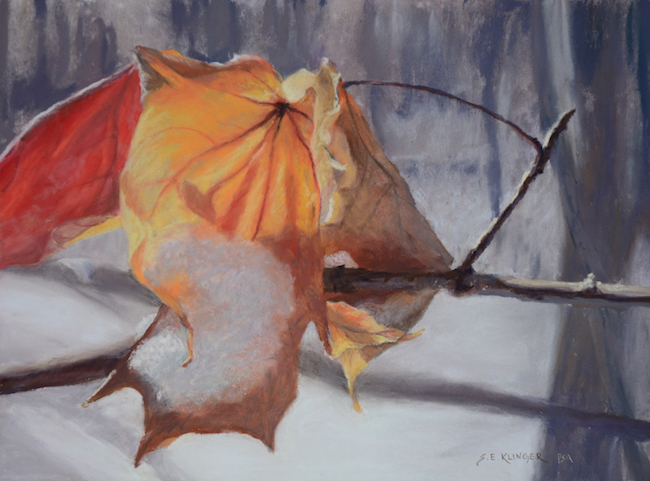
7 Ways You Might Be Scaring Off Potential Buyers
Art buyers often have as many insecurities about the process of buying art as you do, which means they are sensitive to the signals you’re sending.
It’s your job to reassure them that they are making the right decisions – and you can do so in very subtle ways without resorting to sales speak.
And it has just as much to do with what you don’t do and say.
Here are seven practices that will scare off your audience and potential fans.
1. Being indecisive about prices.
Indecision makes you appear less confident.
Set your prices after you’ve done your homework and be ready to share them in person and online.
If you’re ever pushed for a price that you aren’t certain about, say, “Let me check my list and get back to you. I wouldn’t want to give you the wrong price.”
2. Apologizing for your art.
The apologetic artist who brushes aside compliments about her art is not market-attractive.
I am not in any way condoning arrogance. I’m saying that you need to hold your head up and say “Thank You” when you are given a compliment.
As Julia Child said in Julie & Julia, “Never apologize. No excuses. No explanations.” Along the same lines . . .
3. Playing down the fact that you’re an artist.
Heart surgeons don’t look at the ground and say, “I’m kind of a heart surgeon.” When someone asks what you do, you shouldn’t respond meekly with, “Well, I’m kind of an artist.”

The Art Biz ep. 11: Portrait Project and Museum Exhibition with Lisa Kovvuri
Lisa and I discuss her project, The Portrait Experience, and how it was conceived and executed at Whistler House Museum of Art.
In particular, she reveals how she found people to sit for her and what she learned during the project. We also learn that most of the paintings had since sold.

You’re Probably Going to Fail
My definition of failure is not taking a chance. Not risking it. Playing it safe.
Everything else that other people might call failures, I prefer to think of as lessons.
Failure would be giving up without absorbing the lessons that might contribute to my personal and professional growth.
You’re probably familiar with this well-known quote:
What would you attempt if you knew you couldn’t fail?
– Robert Schuller
It’s a good one, huh? What would you try if you were assured a successful outcome?
There’s zero risk, so why not?
I’ll tell you why not. Because it doesn’t sound like fun. It’s a gimme. There’s no adrenaline rush or sense of accomplishment if you already know the outcome.
I like this updated version:
If something is important enough you should try, even if the probable outcome is failure.
– Elon Musk
In other words, what do you believe in so passionately that you are ready to take a chance on it even if your success isn’t guaranteed?

7 Ways to Expedite Your Breakthrough
I hope you’ll agree that breakthroughs come in handy. Yes?
It’s pretty awesome when the perfect answer appears or that nagging problem is solved. Suddenly, the barrier is removed and you can make progress.
You can’t identify the moment that a breakthrough will happen, but you can prepare yourself for it to come.
Breakthroughs happen as a result of doing the work and being present. Here are 7 ways to accelerate the process.
1. Solve a problem.
Any problem! Art is about solving problems.
How can I balance the composition?
How can I make this with less expensive materials?
How can I convey this or that emotion?
Faith Ringgold was researching shipping options for her paintings when she realized that if she just painted on fabric, without the support, she could roll it up and easily ship it in a tube.
2. Challenge yourself.
There’s very little motivation in the daily grind: update Facebook, schedule a few tweets, send a newsletter, write a blog post, work in the studio. If you’re not careful, you can get stuck checking off menial tasks without doing something extraordinary for your art and for yourself.
Pick a color or

Self-Portrait: What You Do and Who You Want to Be
How do your close friends describe you?
How does your family describe you?
How do your students describe you?
How do you describe yourself?
All of those descriptions might be true, but they might also mask your potential.
If you grip too tightly to the stories of who you think you are, you’ll never be open to what you can become. [Tweet this]
For example, you know me as someone who is a no-excuse-action-taking-don’t-stop-working kinda gal. I have never had a problem taking action.
My reputation so precedes me that often the first thing many people do upon meeting me is apologize for their lack of action.
It’s cool with me if I inspire the need for action in artists, but I have many other sides and so do you.
We get to make our own self-portraits.
Who Do You Want to Be?
A number of years ago, I began
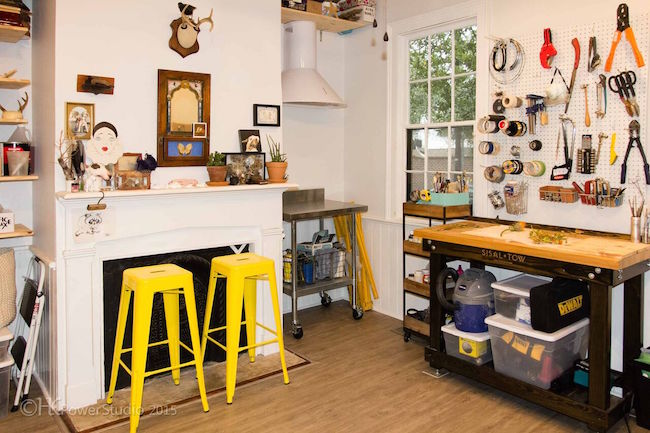
The Art Biz ep. 10: Creative Organizing with Heather K. Powers
I used to teach an online class called Organize Your Art Biz. I quit teaching it when I realized that there’s no such thing as the right way to get organized.
My guest for this episode of the Art Biz Podcast, Heather K. Powers, figured it out long before I did. As the founder of Creatively Organized Spaces, Heather customizes solutions for organizing systems and storage for her creative clients.
In this interview, Heather and I discuss:
- The stereotype that artists are inherently disorganized.
- Her philosophy for helping artists get organized.
- The biggest pain point artists have when it comes to organizing.
Heather also shares a number of tips, including:
- Know what you want before you start organizing.
- Schedule time for organizing (3-4 hours at a time seems to be a sweet spot).
- Make a plan before you go buy a lot of containers.
- Create work zones.
LISTEN NOW …




